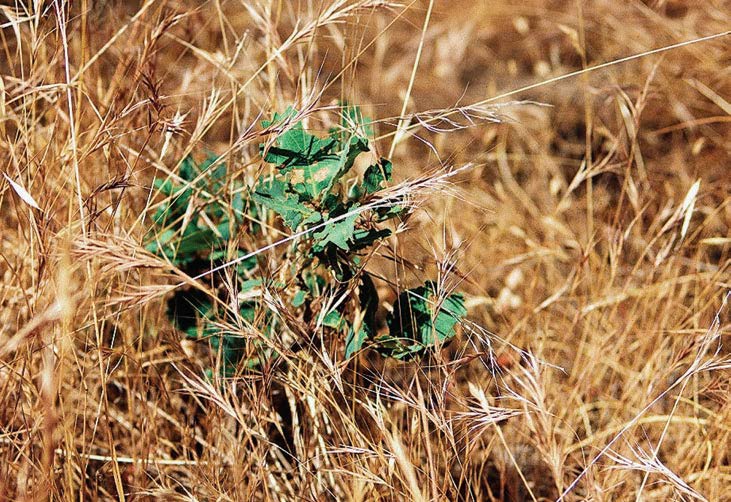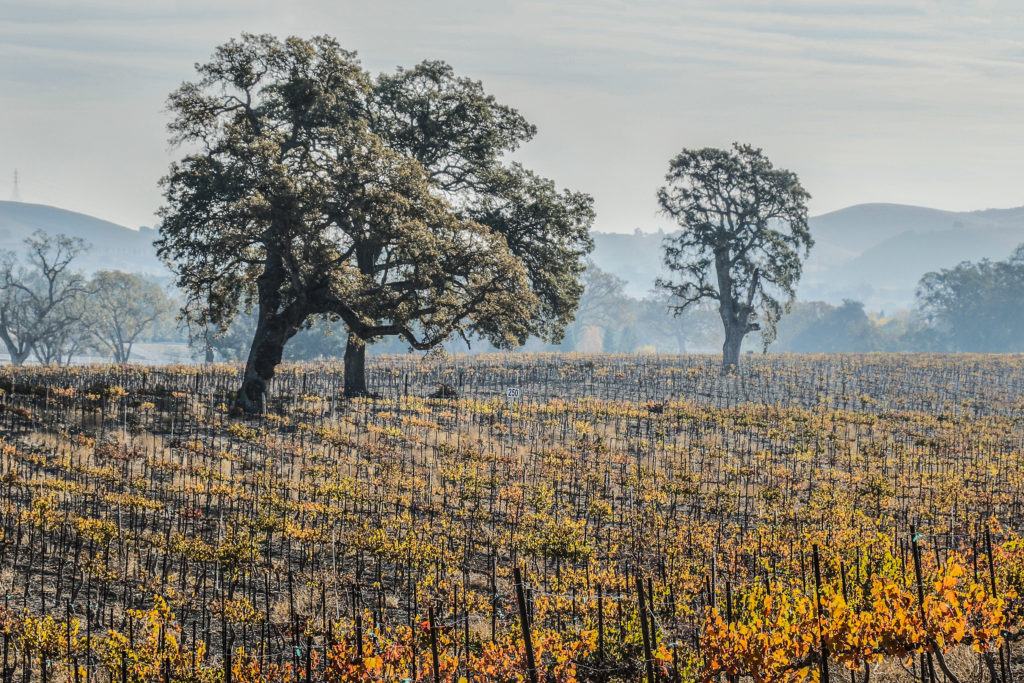There has been widespread concern that some native California oaks were not regenerating adequately. Three California oak species (blue oak, valley oak and Engelmann oak) have been repeatedly identified as species that have inadequate regeneration to maintain current stand densities.
There has been considerable research during the past several decades on where and why oak regeneration is problematic and how to successfully artificially regenerate oaks. In addition, the University of California has hosted numerous training sessions where the latest information on oak regeneration has been disseminated.

Oak Regeneration and Restoration Resources

California’s Oak Woodland Species
There are over 20 species of native California oaks. Several of these are endemic and grow naturally nowhere outside of California, while others are more wide ranging and grow from Canada to Mexico. Use the Oak Identification Tool to view descriptions of eight California tree oak species, including information about what the bark, leaves and acorns look like. There are also pictures and line drawings of each of these species, as well as range distribution maps and other species-specific information.
Oaks 'n Folks Articles - Summaries of journal articles archived from the IHRMP Newsletter
Oak Woodland Ecology & Monitoring Articles
Canyon Live Oak-Current and Historical Perspective
A Hardwood Rangeland Classification System for California
Historic Distribution of Oaks from Pollen Analyses
Nutrient Cycling in California
Acorn Production by California Oaks
Vernal Pools in Oak Woodlands: Puddles or Unique Habitats?
Large Scale Change Detection in California Using LandSat Satellite Imagery and GIS
Assessing Potential Hardwood Loss in the Northern Sacramento Valley Using GIS Technology
Return of Natural Hardwood Regeneration in a Cleared Watershed
Cattle Grazing Effects on Spring Ecosystems in California’s Oak Woodland
Habitat Fragmentation Limits Pollen Availability and Acorn Production in Blue Oak
A Half Century of Change to the Flora of a Hardwood Rangeland in Northwest California
Earthworm Ecology in California
McLaughlin Reserve Protects California’s State Rock
Community Involvement Needed in Monitoring Sudden Oak Death in California
Successful Burning Strategy to Control Barbed Goatgrass
Understanding and Monitoring California Hardwood Rangeland Watersheds
Blueprint for Monitoring Plans
Engelmann Oaks Are Returning Where They Can
Soil processes, vegetation, and cattle grazing: What regulates nitrate leaching into groundwater
Oak Regeneration & Restoration Articles
Oak Regeneration by Artificial Means
Oak Seedling Regeneration on California Rangelands
Growing Bareroot Blue Oak Seedlings
Artificially Regenerating Native Oaks in California
Effects of Tree Shelters and Weed Control on Blue Oak Growth and Survival
Top Pruning Improves Field Performance of Blue Oak Seedlings
Competition Control Strategies for the Artificial Regeneration of California Blue Oak
Tree Shelters Protect Oak Seedlings from Cattle
Techniques to Enhance Oak Regeneration Studied
Black Oak Planting Project Near Grass Valley
Predation in Restoration and Mitigation
Restoring Grazed Riparian Areas With Oaks and Willows
Geographical Ecology of Acorn Production by California Oaks
Deer Herbivory and Riparian Restoration
Weed Control Methods for Oak Plantings
Post-Fire Regeneration of Black Walnut
Exclosure Size Influences Rodent Damage To Blue Oak Seedlings
Treeshelters Cover the English Landscape
Habitat Fragmentation Limits Pollen Availability and Acorn Production in Blue Oak
Proceedings of Regeneration Workshop Available
Ten Years of Oak Restoration in City of Walnut Creek Open Spaces
